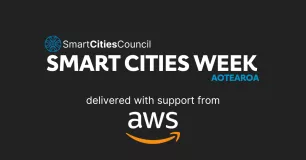
By Eric Woods
The path to better control of street lighting has been blazed by the adoption of light-emitting diode (LED) technology. The continuing fall in the price of LED street lights is making them an attractive proposition for cities around the world, particularly for new installations. The deployment of networks to manage these new installations has been a slower process, but there are positive signs that the adoption of control systems is also speeding up.
Networked control of street lighting systems can provide energy savings as well as a host of non-energy benefits, but those savings and benefits are not as clear-cut as the dramatic energy savings from a switch to LEDs. The additional value of installing a smart street lighting network comes from greater control, reduced maintenance costs and, above all, the possibility of integrating street lighting with multiple other intelligent systems: traffic light controls, security cameras, electric vehicle charging stations, environmental sensors and digital signage.
However, to fulfill the potential for integration, smart street lighting systems have to become more adaptable and more open. In short, they need to look more like platforms than proprietary, closed systems.
The importance of standards
The adoption of standards at multiple levels is crucial if smart street lighting networks are to serve as a backbone and launching pad for other smart city projects. Standards adoption will open up the market and provide cities with more choice and greater confidence about the future value of their investment.
Standards-based software and communications protocols enable greater interoperability between systems, but there is also a role for more standards at the hardware level. For this reason, the publication of a new standard by the National Electrical Manufacturers Association (NEMA) earlier this year is an important development. Standard 136.41 defines a dimming controller and socket for street light luminaires. The implications of the new standard is that, as long as a city purchases compliant street lights, it will be able to add control features such as dimming and wireless communications at a later date simply by purchasing any vendor’s compliant controller and plugging it into the top of their lights.
The ability to buy new street lights and add controls later – from different manufacturers – should be a boon to municipal managers and street light controls vendors alike. A number of manufacturers are already selling products compatible with the standard, and others will soon follow. As a result, street lights sold around the world will have the capability to easily incorporate smart control systems. For city officials, the move to smart street lighting thus becomes a more logical and natural step and less of a leap in the dark.
Cities like Chattanooga, Tennessee and Copenhagen are already developing programs that encompass intelligent street lighting systems as part of a broader network strategy. This development is important to suppliers as well. The decline in LED prices means that total street lighting revenue globally will begin to fall from 2018; but the market for control equipment and control software will continue to grow strongly over the next decade.
For a detailed examination of the benefits of smart street lighting for smart cities, the challenges still to be addressed, and Navigant Research’s forecasts for the growth of the market, please join us for the upcoming free webinar from Navigant Research, Smart Street Lighting for Smart Cities on Tuesday, July 8, at 2 p.m. EDT. Click here to register.
###
Eric Woods is a research director leading Navigant Research’s coverage of smart cities. In this role he brings together his research experience in smart grids, smart water networks, smart transport, and smart buildings. He has over 20 years of experience as an analyst and consultant on new technology trends including in-depth research in the areas of IT infrastructure, data analytics, knowledge management, public sector IT, and clean-tech innovation.



